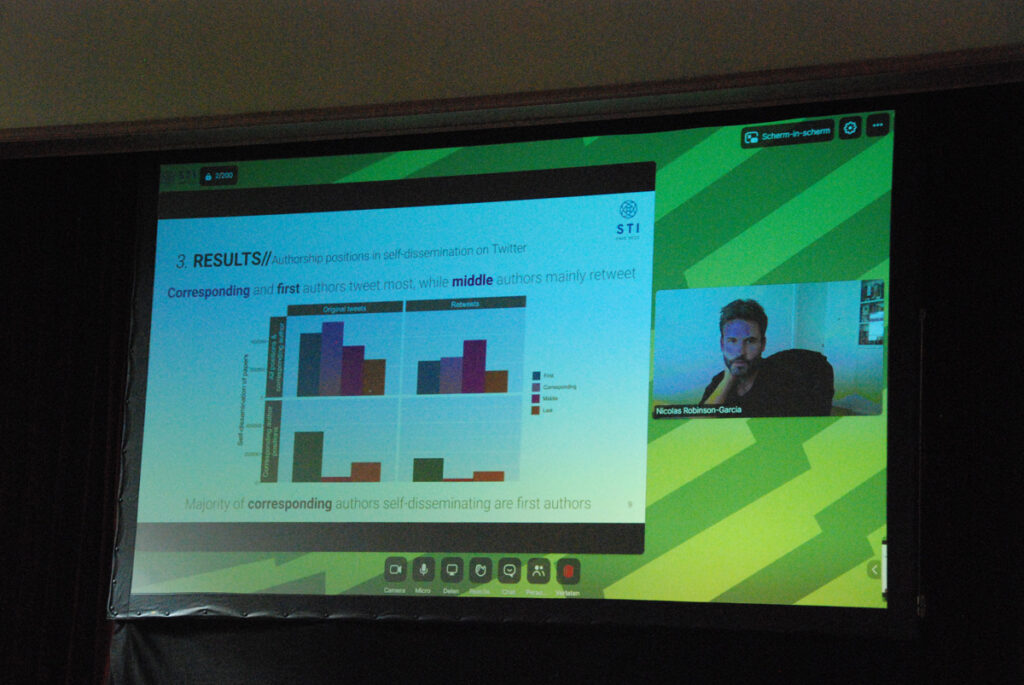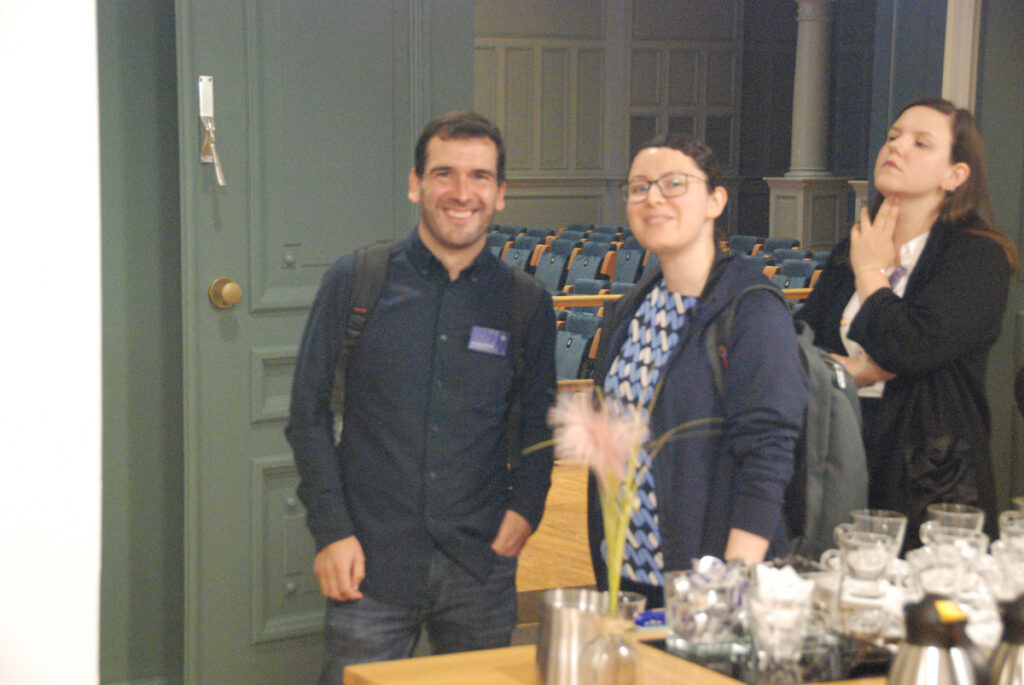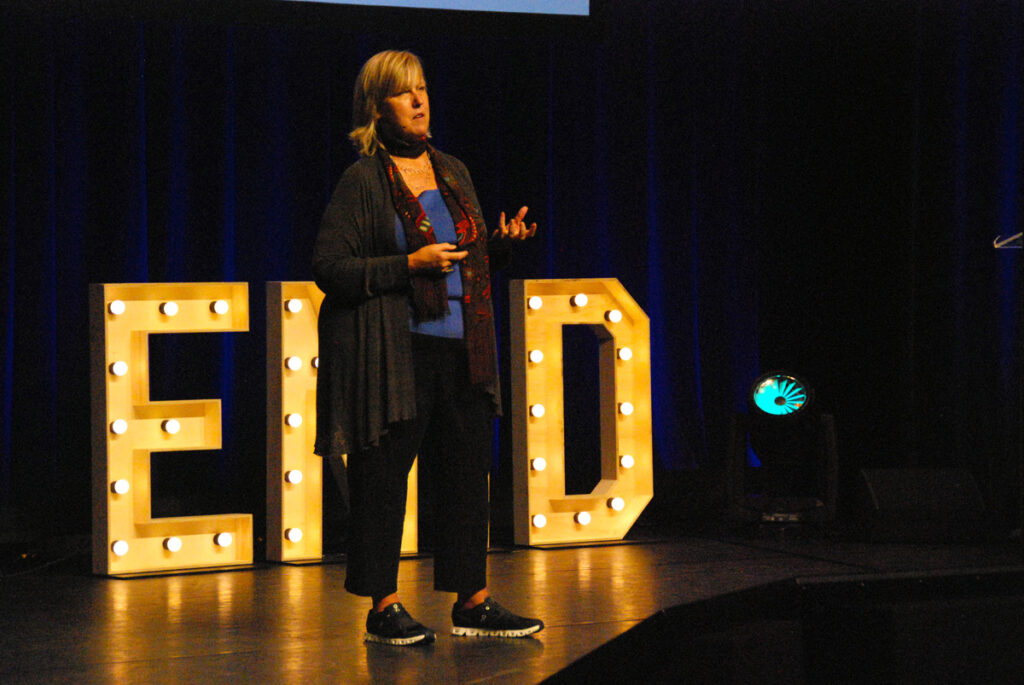The COMPARE team participated on the 27th International Conference on Science, Technology and Innovation Indicators (2023) with five different contributions. The conference took place in Leiden (The Netherlands) from 27-29th September 2023.
Firstly, Wenceslao Arroyo-Machado, Daniel Torres-Salinas and Nicolás Robinson-García presented their work on «Tweet my paper: Who handles dissemination on Twitter?». The submission is accessible here, and the presentation here:
Abstract:
The communication of research results is a task that is not equally distributed among authors. This paper explores how researchers distribute dissemination tasks on Twitter, the main channel for scientific communication. The main goal is to determinate which authorship position is most associated with self-dissemination of papers on Twitter, and whether this pattern is homogeneous across research areas. For Twitter mentions to papers, a large-scale dataset was created by merging Web of Science and Altmetric.com data, while for the identification of scholars on Twitter, an open dataset was used. Our main finding shows that 27% of Twitter users who mention papers are scholars and that only 13% of their mentions were for self-promotion purposes. Likewise, the corresponding author is the main responsible for this dissemination, a role that is mainly carried out by the first author.

Secondly, Wenceslao Arroyo-Machado, Enrique Herrera-Viedma and Daniel Torres-Salinas presented «The Elon Musk Paradox: Quantifying the Presence and Impact of Twitter Bots on Altmetrics with Focus in Social Sciences». The presentation used can be found here, and the submission here:
Abstract:
With the rise of Twitter bots in social and political spheres, their implications in scientific communication and altmetrics have become a concern. However, there are no large-scale studies that identify the population of bots and their impact on altmetrics. This quantitative study aims to analyse the presence and impact of Twitter bots in the dissemination of Social Science papers on Twitter and to explore the specific case of Information Science & Library Science (ISLS) as a case study. The overall presence of bots discussing Social Science papers has been found to account for 3.61% of users and 3.85% of tweets. However, this presence and impact is uneven across disciplines, highlighting Criminology & Penology with 12.4% of the mentions made by bots. In the specific case of ISLS, it has been determined by Kendall’s correlation that mentions of bots have no impact on altmetrics.
Thirdly, Wenceslao Arroyo-Machado and Rodrigo Costas presented «Do popular research topics attract the most social attention? A first proposal based on OpenAlex and Wikipedia» (accessible here and here):

Abstract:
Altmetric research has seen its horizons expanded to the heterogeneity of interactions produced between scientific and non-scientific entities. In this context, Wikipedia stands out as a social media of particular interest as the page views of its articles have proven to be a valuable metric of social attention. The aim of this paper is to contribute to this new research stream by analysing whether the research topics of greatest academic interest align with those that attract the most social attention. To this end, the OpenAlex concepts are explored by comparing their works count with the page views of their respective Wikipedia articles. As a result, a correlation analysis between the two metrics reveals a lack of connection between the two realms. Likewise, root-level concepts are explored to illustrate such a difference.
Rodrigo Costas also chaired the session called «Bibliometrics – Data sources»

Lastly, Julia Melkers, Eric Welch, Mayra M. Tirado, Richard Woolley, Nicolás Robinson-García and Aleksandra Klein presented «Social innovation for resilience in international collaborative research», accessible here:
Abstract:
The internal dynamics and structure of collaborations affect the performance of its members and, ultimately, the success of the collaborative enterprise. This is tested under conditions of disruption, stressing team dynamics and their ability to succeed. Teams may adapt, employing social innovations which facilitate their ability to adjust to uncertain and changing circumstances. We examine these innovations within the context of international collaborative teams, specifically in the context of the COVID-19 pandemic. The study employs a mixed-methods, multi-country case study research design to identify successful teams’ characteristics and develop a typology of social innovations that can promote team resilience. The analysis focuses on individual, group, and organizational factors that contribute to teams’ adaptability, including adjustments in behaviors, expectations, work and resource allocation, and social interactions. Our study sheds light on how teams’ resilience capacity helps teams innovate their social dynamics and navigate external shocks and succeed in dynamic environments.
